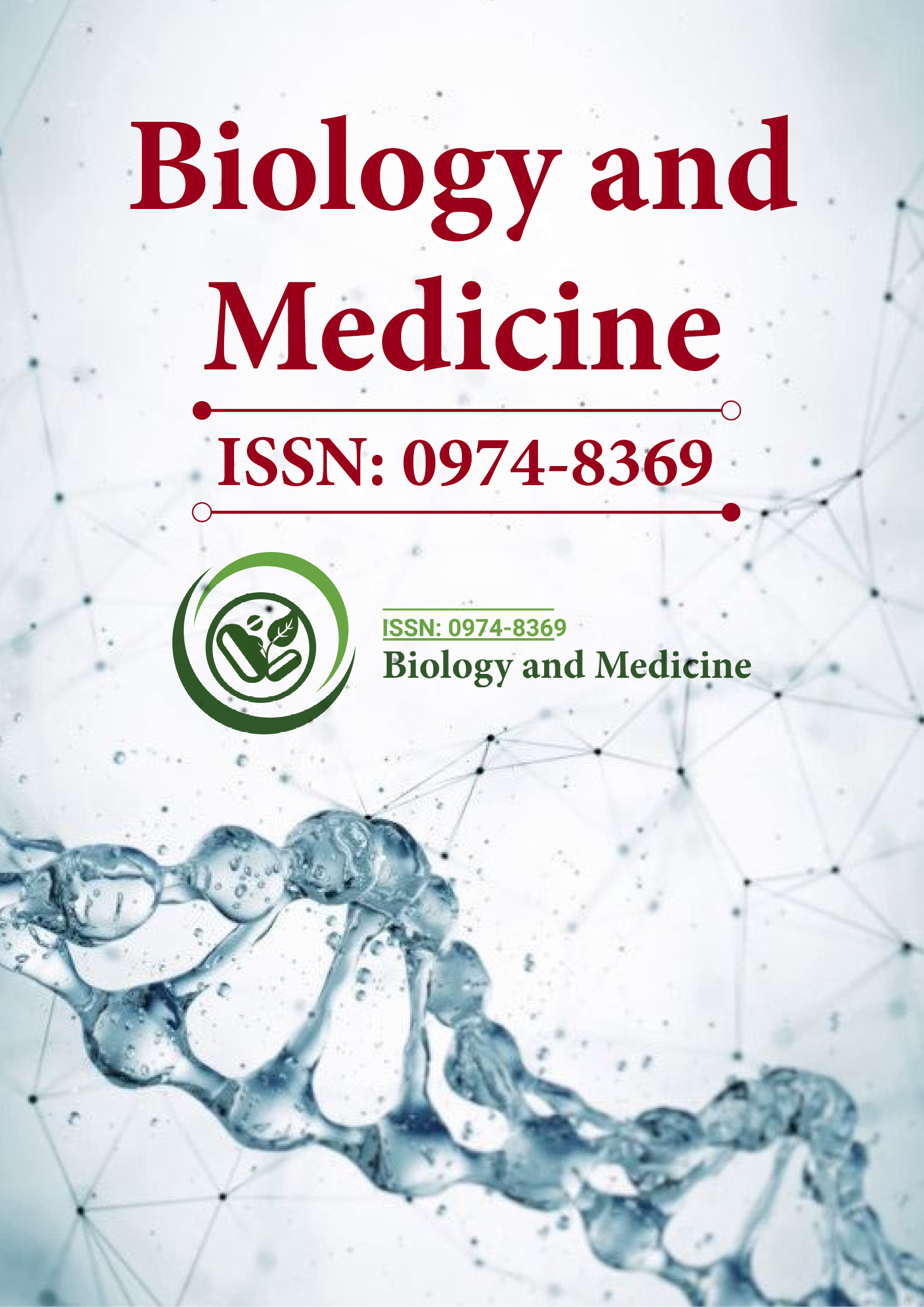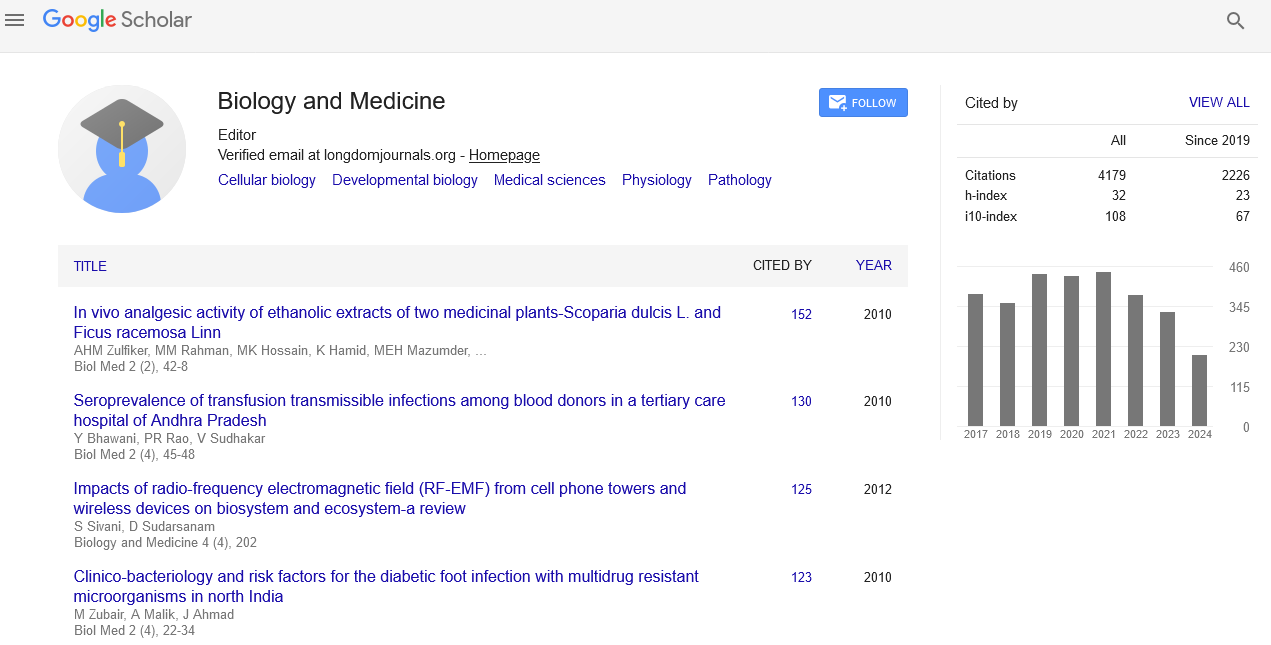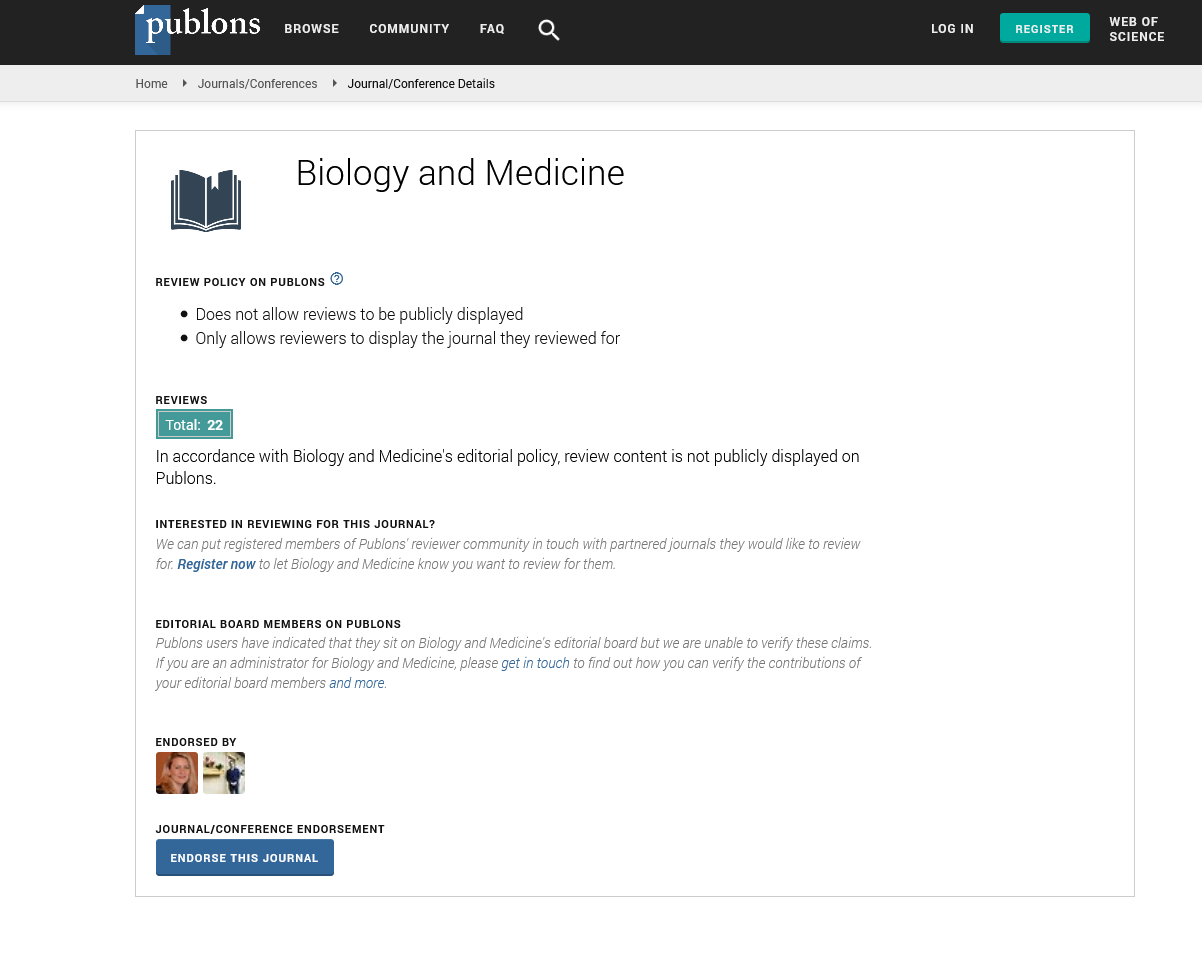Indexed In
- Open J Gate
- Genamics JournalSeek
- CiteFactor
- Cosmos IF
- Scimago
- Ulrich's Periodicals Directory
- Electronic Journals Library
- RefSeek
- Hamdard University
- EBSCO A-Z
- Directory of Abstract Indexing for Journals
- OCLC- WorldCat
- Proquest Summons
- Scholarsteer
- ROAD
- Virtual Library of Biology (vifabio)
- Publons
- Geneva Foundation for Medical Education and Research
- Google Scholar
Useful Links
Share This Page
Journal Flyer

Open Access Journals
- Agri and Aquaculture
- Biochemistry
- Bioinformatics & Systems Biology
- Business & Management
- Chemistry
- Clinical Sciences
- Engineering
- Food & Nutrition
- General Science
- Genetics & Molecular Biology
- Immunology & Microbiology
- Medical Sciences
- Neuroscience & Psychology
- Nursing & Health Care
- Pharmaceutical Sciences
Opinion Article - (2025) Volume 17, Issue 4
Gene Therapy: A New Era in Curing Inherited Diseases
Sophia Patel*Received: 12-Feb-2025, Manuscript No. BLM-25-28792; Editor assigned: 14-Feb-2025, Pre QC No. BLM-25-28792 (PQ); Reviewed: 23-Mar-2025, QC No. BLM-25-28792; Revised: 07-Mar-2025, Manuscript No. BLM-25-28792 (R); Published: 14-Mar-2025, DOI: 10.35248/0974-8369.25.17.764
Abstract
Description
The field of gene therapy has made incredible strides over the past few decades, offering the possibility of curing inherited diseases that were once considered untreatable. By directly altering the genetic material within a patient's cells, gene therapy offers a potential solution to conditions caused by genetic mutations. Whether through gene replacement, gene editing, or the introduction of new genes to correct deficiencies, gene therapy could not only alleviate the symptoms of genetic diseases but also provide a permanent cure.
In recent years, we have witnessed the successful application of gene therapy in clinical settings, such as in the treatment of severe combined immunodeficiency (SCID), commonly known as bubble boy disease. However, despite the promising results, there are significant challenges and concerns regarding the widespread use of gene therapy. These challenges include ethical dilemmas, safety issues, and long-term effects on the patient. In this article, we will discuss the current state of gene therapy, the successes it has achieved, the challenges it faces, and the future outlook for this groundbreaking treatment.
The Cure for Severe Combined Immunodeficiency (SCID)
One of the most notable successes in gene therapy has been the treatment of Severe Combined Immunodeficiency (SCID), a rare genetic disorder that leaves children with a compromised immune system, rendering them highly susceptible to infections. The condition is caused by mutations in the IL2RG gene, which is responsible for producing a protein essential for the immune system's proper function.
In the early 2000s, gene therapy trials began using retroviral vectors to introduce a functional copy of the IL2RG gene into the stem cells of SCID patients. The results were transformative. Many of the children who underwent treatment showed remarkable improvements, with their immune systems developing the ability to fight off infections. This success marked a milestone in the gene therapy field, offering hope for patients with other genetic disorders.
Gene therapy for SCID has since evolved, with CRISPR-Cas9 and other more advanced technologies offering even more precise and effective methods of gene editing. These techniques are not only improving the success rates of gene therapy but also reducing the risk of unintended side effects.
Progress in treating other genetic disorders
Beyond SCID, gene therapy has shown promising results in treating a range of inherited conditions, including hemophilia, sickle cell anemia, muscular dystrophy, and certain blindness-related disorders. For instance, Luxturna, a gene therapy for inherited retinal disease, was approved by the FDA in 2017, marking the first gene therapy for an inherited disease to be approved in the United States. Luxturna involves delivering a functional copy of the RPE65 gene to retinal cells to restore vision.
Similarly, gene-editing techniques like CRISPR-Cas9 have been successfully used in trials for sickle cell anemia, where the goal is to edit the beta-globin gene in patients' bone marrow cells to correct the mutation that causes the disease. Early results have been promising, and researchers are optimistic that CRISPR-based therapies will offer a permanent cure for sickle cell patients in the near future.
Ethical considerations
While the potential for curing inherited diseases through gene therapy is remarkable, it raises significant ethical questions. One of the most debated topics is the issue of germline editing, where genetic modifications are made to embryos or reproductive cells. These changes are passed on to future generations, raising concerns about unintended consequences, the potential for designer babies, and the ethics of altering human genetics at the germline level.
There are also concerns about equity and accessibility. Gene therapy is an expensive and complex treatment, often costing millions of dollars per patient. This raises questions about whether the benefits of gene therapy will be accessible to all patients or whether it will remain a privilege for the wealthy. Governments, healthcare systems, and insurers must work together to ensure that this revolutionary technology is not restricted to only a small segment of the population.
Safety and long-term effects
Another significant concern with gene therapy is safety. While early trials have shown promising results, gene therapy is still a relatively new field, and the long-term effects are unknown. The introduction of foreign genetic material into the body can sometimes trigger immune reactions, which could lead to complications such as inflammation or autoimmune diseases.
Additionally, the use of viral vectors to deliver genes raises concerns about potential viral integration into the patient's genome, which could cause mutagenesis and lead to the development of cancers.
For example, in earlier gene therapy trials for SCID, some patients developed leukemia due to the way the retroviral vectors inserted the therapeutic gene into the genome. Although advances in gene delivery methods are reducing such risks, further research is needed to ensure the safety of these therapies.
Regulatory and regulatory hurdles
Gene therapy is subject to stringent regulatory oversight, as the potential risks and rewards are profound. Regulatory bodies, such as the FDA and the European Medicines Agency (EMA), have established guidelines to ensure the safety and efficacy of gene therapy products. However, these processes can be slow, and in some cases, the regulatory burden may stifle innovation and delay access to life-saving therapies. Navigating this regulatory landscape will require collaboration between scientists, regulators, and industry stakeholders to balance patient safety with the need for rapid innovation.
The future of gene therapy
Looking forward, gene therapy holds even more promise with the ongoing development of more precise and effective techniques. CRISPR-Cas9, in particular, has transformed the landscape of gene editing, allowing for targeted alterations of DNA with unprecedented precision. Researchers are working on improving CRISPR delivery systems to increase the efficiency and safety of gene editing, with the hope of expanding the range of treatable diseases.
Other gene-editing tools, such as base editing and prime editing, promise even greater accuracy, reducing the risk of off-target effects and improving the overall safety of gene therapy. These advancements will likely enable more complex genetic disorders to be treated with precision.
Gene therapy for complex diseases
While current gene therapy trials have focused on single-gene disorders, there is growing interest in applying gene therapy to more complex diseases, such as cancer and neurodegenerative diseases. For example, researchers are exploring the use of gene therapy to correct the genetic mutations underlying Parkinson's disease and Alzheimer's disease, or to enhance the body's natural ability to fight cancer through gene-based immunotherapies.
These approaches are still in the early stages, but the potential for personalized cancer therapies and gene editing for neurological disorders could revolutionize the way we treat these conditions.
Conclusion
Gene therapy represents a transformative step forward in the treatment of inherited genetic disorders. With successes in SCID, hemophilia, sickle cell anemia, and other conditions, we are witnessing the potential of gene therapy to cure diseases once thought to be untreatable. However, there remain significant challenges related to ethics, safety, and accessibility that must be addressed for gene therapy to achieve its full potential. As the field continues to evolve, it is crucial that we take a cautious yet optimistic approach, ensuring that these revolutionary treatments are safe, effective, and available to all who need them.
Citation: Patel S (2025). Aging and Medicine: Reversing the Biological Clock. Bio Med. 17:764.
Copyright: © 2025 Patel S. This is an open-access article distributed under the terms of the Creative Commons Attribution License, which permits unrestricted use, distribution and reproduction in any medium, provided the original author and source are credited.


